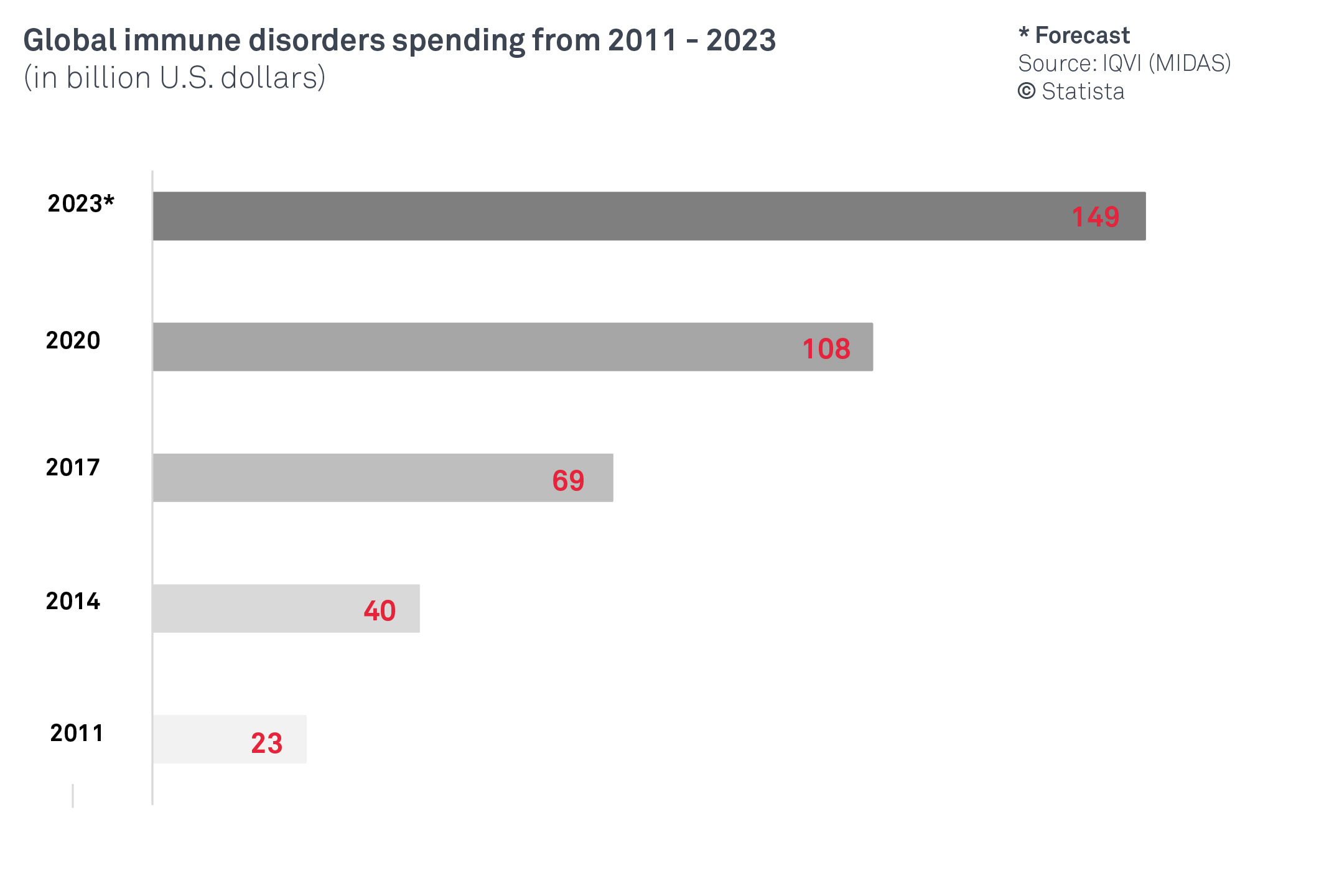In healthy individuals the immune system acts as a defensive line to protect us from a variety of infectious agents such as bacteria, toxins and viruses. A key requirement to fulfill this defense is for the body to be able to distinguish ‘foreign agents’ from ‘self’, a process that needs to be tightly regulated. When these regulation mechanisms fail, the immune system can attack not only pathogens but also the body's own tissues, resulting in autoimmune diseases (Riedhammer and Weissert, 2015; Mohammadi et al. 2022). Worldwide, millions of people suffer from autoimmune diseases.
This article discusses the discovery, prevalence, healthcare costs, diagnostic tools, and upcoming developments in the field of autoimmune diseases. The discovery of autoimmune diseases dates to the early 20th century, when doctors first noticed that some patients had symptoms that seemed to be caused by their own immune system. However, it wasn't until the 1950s and 1960s that scientists began to fully understand the underlying mechanisms of autoimmunity (Ahsan, 2022). Today, there are more than 80 different autoimmune diseases that have been identified, each with its own unique set of causes. (Rose, 2016).
It is estimated that 8% of the population suffers from autoimmunity worldwide. Some of the most common autoimmune diseases include multiple sclerosis, rheumatoid arthritis, and type 1 diabetes. Autoimmune diseases affect more women than men, with approximately 80% of all patients being female, and their risk increases with age. (Whitacre 2001; Fairweather and Rose 2004). In fact, autoimmune diseases are a leading cause of death in women (Walsh and Rau, 2000). In addition, a number of studies have also suggested that autoimmune diseases have become more prevalent in recent decades (Miller, 2022).
The healthcare costs associated with autoimmune diseases are spiralling. In the United States alone, it is estimated that the annual cost of treating autoimmune diseases is around $100 billion (AARDA report, 2011 ). This includes the cost of medications, hospital stays, and lost productivity due to missed work.

Diagnosing autoimmune diseases can be difficult as many systemic autoimmune diseases have similar symptoms, and the underlying causes are often unknown. However, there are several tools that are commonly used to aid diagnosis, including serological immunoassays, immunofluorescent assays, and biopsies. Autoantibodies, antibodies that are directed against the bodies own tissue, are not diagnostic for the disease alone. However, they do indicate the presence of autoimmunity. More recently, research has been focused strongly on predicting the disease before it manifests to avoid severe tissue damage (Rose 2015; Miller 2022).
In the future, it is likely that the diagnostic sector will continue to grow and evolve, as scientists and medical professionals work to develop new and more effective diagnostic tools. This may include the use of genetic testing, which can help to identify people who are at high risk of developing autoimmune diseases (Miller, 2022). Additionally, research is focused on developing new drugs and therapies that can help to treat autoimmune diseases more effectively.
Autoimmune diseases are a significant and growing concern in modern medicine. With millions of people affected worldwide and healthcare costs reaching into the billions of dollars, more research is needed to understand the underlying causes of autoimmunity and develop new and effective treatments. The future of the diagnostic sector looks promising with new technologies and diagnostic tools being developed to help identify autoimmune diseases early, and hopefully improve the quality of life for those affected.






